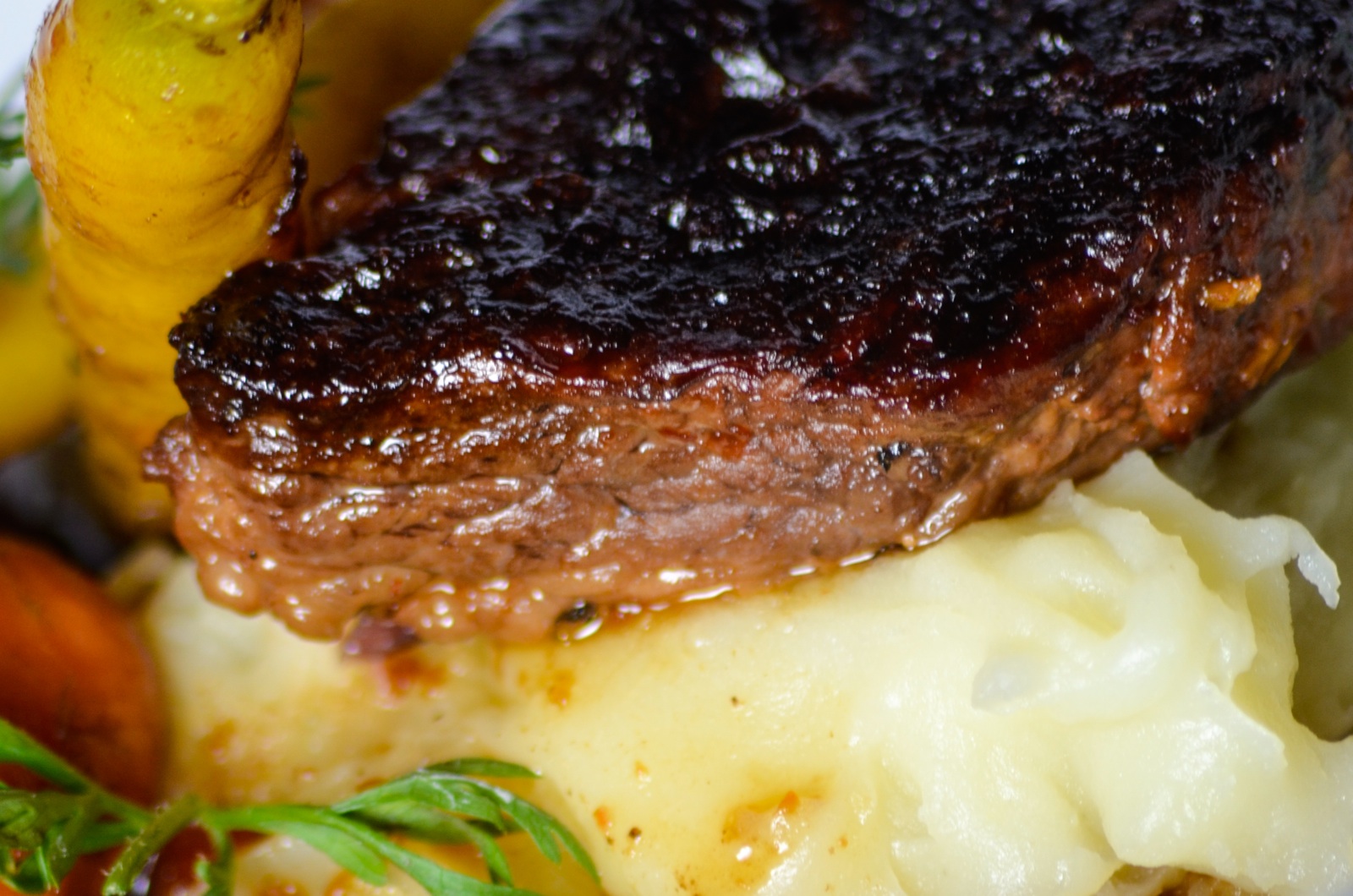
Essential Kitchen Tools: Thermometers and Scales
This is the start of a series of articles where I talk about a few of the tools I find are absolutely vital in my kitchen. I don’t mean tools that “are nice to have” or “make things easier.” I mean “essential” – as in, you can’t make certain dishes without these sorts of tools. Today we’ll talk about thermometers and scales.
Thermometers
Recommended Buys:
- ThermoWorks ThermaPen ($99) – if you only buy one thermometer in your life, buy this one.
- ThermoWorks Industrial Infrared Thermometer ($49) – won’t measure internal temperature, but great for measuring oil and pan temperature.
I love my instant-read thermometers. Serving raw pork or chicken is not only dangerous, but horribly embarrassing; I speak from experience. Since getting my thermometer, I’ve saved myself from repeating this horror a handful of times. Knock on wood, I’ve never made anyone horribly ill yet. However, I don’t want to focus on the safety aspect of having a good thermometer. I’m here to pitch that a quality thermometer will actually make your dishes tastier, and enable you to cook things properly.
Consider the following instructions:
- “As soon as the internal temperature of your salmon hits 125 degrees, pull the plank off the grill.”
- “Keep the oil temperature at 350 °F (177 °C)”
- “Wait for your cast iron skillet to hit 500 °F (260 °C)”
These are all real cooking instructions that one would be unable to follow without the right kinds of thermometers. The first is for my cedar plank salmon recipe, the second is for homemade tortilla chips, and the third is for cooking steaks. It’s not that you couldn’t take a stab at doing some of these dishes without a thermometer or that your dish will necessarily come out inedible – it will just be much better with the right tools. It will also make your cooking more relaxed. Trying to guess when something is the right temperature requires intense focus and intimate knowledge of how your cookware performs. You’re wasting time and energy by not getting a good thermometer.

“OK, you’ve sold me on getting a thermometer” you say. “But, why are you recommending me this $99 thermometer when I can get a $15 thermometer at my local store?” Great question. It’s a simple answer really – speed. There are a lot of thermometers labeled as “instant,” but I’ve found their definition of instant is really more like 5 to 6 seconds. This is unacceptable, especially when probing meat. It’s hard to tell exactly where the deepest part of the meat is. If you’re too shallow, you may get a false sense of security with a higher temperature reading. When you have a thermometer that is truly “instant” – you can continually probe at different depths until you see the lowest temperature. The only thermometer I’ve ever found that is truly instant is the one from ThermoWorks. Simple as that. I should also mention I have no affiliation with ThermoWorks (or any of the manufacturers I recommend), I just happen to love their product.
Scales
Recommended Buys:
- Large Scale ($15) – for precision greater than 1 gram
- Small Scale ($12) – for precision of fractions of a gram
I cooked for a long time without using scales. At a certain point, I came across a recipe that required precisely 5.6 grams of an emulsifier, and 280 grams of cream. The cream I could roughly translate to a volume (i.e., “cups”). Figuring out how to change this quantity of emulsifier into teaspoon measurements was pretty much impossible. So, I pulled the trigger and got two scales: one for large measurements like the cream, and one for small/precise measurements like the emulsifier.
Then I discovered something else. There are a whole category of recipes out there that use weights rather than volume. And, the ones using weights often turn out way better than the others. Take a basic fresh pasta recipe for example. Plenty of recipes would call for something like “4 large eggs and 3 1/2 cups flour.” But, how do you know what a “large” egg really is? Go to your supermarket and look at all the brands of “large” eggs; you’ll see an incredible variation in actual size despite “large” being an actual regulated measurement. Instead, a more reliable measure is to use weight. Pasta has a 1.5:1 flour to egg ratio. Take your 4 large eggs, weigh them, and then add 1.5 times the weight in flour. You’ll get much, much more reliable results. But, you’ll need a scale.
Unlike the thermometers above, I have no immense brand loyalty to scales. Any reasonably user-reviewed scales will do. I’ve linked a few of them above. Keep in mind, however, that you’ll probably want different scales for large and small measurements. Large scales can’t measure finely enough, and small scales won’t be able to measure larger weights.


